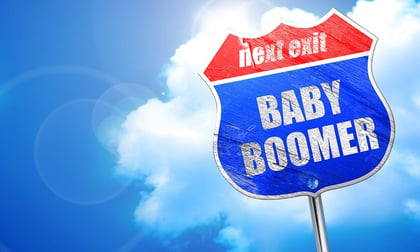 Human resources personnel are used to helping older employees transition into retirement. But now that baby boomers are retiring en masse, it seems to be happening all the time. In fact, as many as 10,000 baby boomers are putting in their retirement papers every single day, and while not all 10,000 will be in your company, you’ll probably be dealing with quite a few.
Human resources personnel are used to helping older employees transition into retirement. But now that baby boomers are retiring en masse, it seems to be happening all the time. In fact, as many as 10,000 baby boomers are putting in their retirement papers every single day, and while not all 10,000 will be in your company, you’ll probably be dealing with quite a few.
As all these boomers retire, your employee benefits package may need to undergo some changes and you may experience a shift in the cost of providing medical benefits as well. Here are some of the things you need to keep in mind as the baby boomers on your staff begin to retire.
Employee Benefits and Medicare
As your baby boomer employees near retirement age, some of their spouses might be a step ahead of them. The way employee benefits work with Medicare is sometimes complicated — especially when it comes to HSAs, which may be a major theme of the bulk of questions posed by those looking to retire. If your employees need to learn more about how to navigate Medicare, and if they should drop their spouse from your employer-sponsored coverage, make sure you’re as informed as possible regarding the regulations at hand before advising them.
A frequently asked question by those turning 65 concerns penalties. People who are still working and enrolled in an employer-sponsored health plan aren’t likely to incur penalties for enrolling in Medicare late. However, it’s common for people turning 65 to enroll in Medicare Part A even if they’re still enrolled in their employer-sponsored program because it’s free (provided that the person has worked and paid into Medicare for at least ten years).
If your retiring baby boomers are enrolled in HSAs, make sure they know that Medicare Part A begins six months retroactively, so they should stop contributing to the HSA six months prior to enrolling in Part A coverage. This will only come into play if they’ve delayed retirement past the age of 65, which is increasingly common these days. You can read more about how employee benefits work when an employee qualifies for Medicare here.
Parts B and D (regular doctor care and prescription coverage, respectively) also come with late penalties, but they’re typically waived for those who choose to stay enrolled in their employer-sponsored plan for as long as they’re working (provided the employee benefits you provide are considered “creditable”). As long as the baby boomers retiring enroll during open enrollment or during a special enrollment period (which they would qualify for because they’re losing coverage through your company upon retirement), they should be just fine. It’s a good idea to make sure the Medicare plans selected begin the day after their employer-sponsored plan ends so there’s no lapse in coverage.
Altering The Makeup of Your Risk Pool
 As baby boomers and their spouses retire, the makeup of your collective risk pool will also start to change. On the one hand, you may be losing older workers, but there are instances where you may gain older workers, as well. For example, if an employee is enrolled in their spouse’s employer-sponsored plan, but the spouse retires, one or both may switch over to the other spouse's plan.
As baby boomers and their spouses retire, the makeup of your collective risk pool will also start to change. On the one hand, you may be losing older workers, but there are instances where you may gain older workers, as well. For example, if an employee is enrolled in their spouse’s employer-sponsored plan, but the spouse retires, one or both may switch over to the other spouse's plan.
As these demographic shifts take place, your rates and medical claims have the possibility of changing. The older your workforce, the higher your rates will probably climb, while conversely, the younger your workforce, the better your rates will become. Filling recently vacated positions with candidates from a different demographic will invariably impact rates one way or another as well.
Out with the Boomers, in with More Millennials, and then Gen Z
One of the most important things you need to keep in mind when your baby boomers retire is that you’ll need to re-evaluate your recruitment practices and overall employee benefits package.
You’ll have open positions to fill, and while some of those may end up being filled by younger boomers looking to switch companies, you may have internal Gen X applicants. And as we alluded to before, if you fill that position with an existing employee, you’ve created yet another job opening.
This is a pretty common occurrence and it’s oftentimes how the new generation enters the workforce. Many people count on it — their boss retires and they apply for the job. While it technically creates more work for HR, many employers enjoy this practice because the person filling the higher-level position already knows the ins and outs of the company and has been partially trained on the demands of the job.
And for every upper-level position you fill with a lower-level employee, you’ve opened a lower-level job for someone in a younger generation, and younger generations have different employee benefits expectations and desires.
Millennials have different values than Gen Z and you need to be able to design an employee benefits package that still appeals to your remaining baby boomers and Gen Xers you already employ, but also helps you recruit the younger generations entering the workforce or looking to move up.
Designing Employee Benefits for the Younger Generations
Millennials (sometimes called Gen Y) are typically interested in flexible schedules — far more so than baby boomers, who (for the most part) enjoyed the rigid structure of a 9 to 5 work-day. They may even want to work from home part of the week. Those with children may want to leave early to pick them up from school and finish their workday after the kids are in bed.
However, they’re not entirely opposite from their predecessors. As much as baby boomers expected to find affordable healthcare from their employers, millennials watched the cost of healthcare rise exponentially during their lifetimes, thus, increasing the value they place on a sound health insurance package.
In addition, they’re shouldering the burden of rapidly rising college tuition. Many of them have student loan debt — sometimes as much as six figures. Having a student loan repayment program in your employee benefits package would be incredibly appealing to those trying to repay their debt. This is an area where you can be highly structured, offering a fixed amount per person per year. Every little bit  helps, so it’s unlikely they’ll scoff at an extra $50 or $100 per month.
helps, so it’s unlikely they’ll scoff at an extra $50 or $100 per month.
Their successors, Gen Z is the most digital generation yet. Most of them don’t remember a time before computers and will expect your office tech to be updated and running smoothly (especially if they work from home part of the week). More than any generation before them, Gen Z is really into the idea of volunteering and charitable work. They may appreciate the opportunity to participate in a day of service for their favorite charity or one that is supported by your company.
Both generations also value professional development and potential for career growth, so make sure you’re allowing them to take classes, renew their certifications, and be involved in mentorship programs to help them navigate their professional lives. And perhaps it’s a good idea to help them pay for it. You can read more about how to create an employee benefits package for Gen Z here.
Employee Benefits: An Evolving Process
Employee benefits packages are meant to evolve with the makeup of your workforce. Your benefits offerings must reflect the changing values of the American workforce if you hope to recruit and retain the best talent in your industry. It’s good practice to review your benefits package every few years to make sure they still fit with your employees. Don’t be afraid to realign your benefits offerings to coincide with (or get in front of) the new landscape — especially if you’re anticipating a new generation will enter the workforce in the near future.
Be sure to incorporate new benefits younger generations will be interested in, but continue to offer the mainstays your baby boomers and Gen Xers still enjoy. Employees that have been with your company for many years will feel neglected if their favorite benefits are abandoned.
And when your baby boomers retire, do your best to help ease their transition into the next phase of their lives. Even though it sounds like a walk in the park, retirement can be a scary prospect to those who’ve worked for 40 years. While they may get the opportunity to sleep in and spend more time with family, they also have to enroll in an insurance plan they’ve never used and they won’t have an HR person to run to with questions. With a little support, everyone can get through with flying colors.
How are you adjusting your employee benefits now that the baby boomers are retiring? Leave us a comment below or contact us. We’d love to hear what’s working (or not working) for you!
We’d love to help you figure out how your employee benefits work with Medicare! Leave us a comment below or contact us. We can help you figure things out!

















